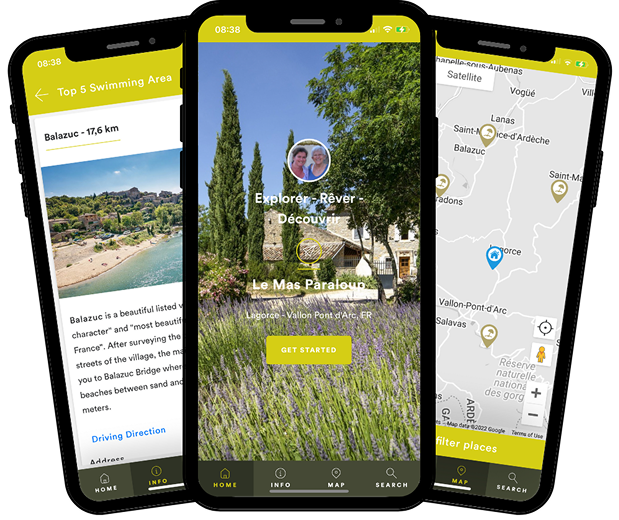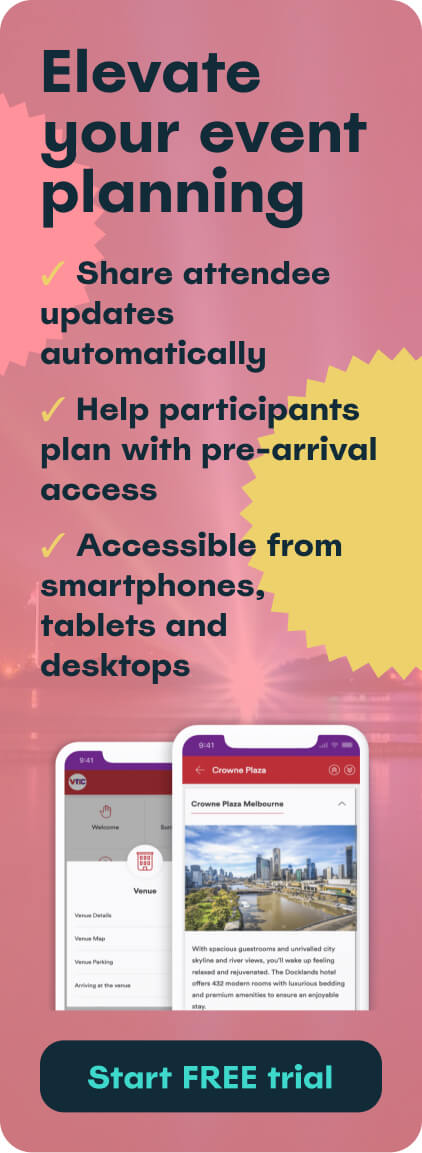The initial interactions you have with guests set the stage for their entire stay. By establishing clear communication from the outset, you can alleviate any anxieties they may have and answer any lingering questions. This lays the foundation for a positive experience that benefits everyone. Guests who feel informed and cared for throughout the process are more likely to relax and enjoy their time at your property, while you'll spend less time fielding repetitive questions and troubleshooting avoidable issues.
- Why is pre-arrival guest communication essential?
- Crafting effective guest communication strategies
- When to start and stop guest communication
Why is pre-arrival guest communication essential?
Pre-arrival guest communication sets the tone for the entire guest experience, fostering a sense of welcome, ensuring a smooth arrival, and laying the groundwork for positive reviews. Here are some key reasons why prioritising communication from the moment a guest books is paramount:
- Reduced repeat questions: by providing all the necessary information upfront, you'll empower your guests to settle in seamlessly upon arrival. This frees you up to focus on other aspects of hosting and ensures a smooth check-in process.
- Positive reviews: guests who feel informed and cared for throughout the communication process are more likely to leave positive feedback online, which can significantly boost your bookings and reach.
- Builds trust: consistent and informative communication from the very beginning establishes you as a professional and reliable host, giving guests peace of mind as they look forward to their stay.
Crafting effective guest communication strategies
The way you present your property online can significantly impact a guest's decision to book, so ensure your communication lays a strong foundation for a positive experience.
Start before they book
- Listing description: craft a compelling and informative listing description that accurately reflects your property's unique features and amenities. Set realistic expectations to avoid any disappointment upon arrival.
- House rules: clearly outline your house rules and guest expectations. This helps to avoid misunderstandings and ensures a smooth stay for everyone.
- Listing title and voice: develop a catchy title and consistent tone of voice that reflects your brand and personality. This will help you attract the right kind of guests who are a good fit for your property.
- Photos: showcase your property with high-quality images that capture its essence and amenities.
Establish a communication plan
- Guest communication flow: map out the touchpoints between booking and arrival to ensure consistent information delivery. This might include a welcome email, a follow-up email with essential details, and a pre-arrival message with check-in instructions. Download our free Guest Communication Planner to help you ace your communications at every stage of the guest journey.
- Schedule messages: Touch Stay’s Memo feature allows you to schedule pre-written or customised SMS texts and/or emails to be sent at designated times throughout the booking process.
Communicate more than you think
Don't underestimate the importance of frequent communication. Aim for at least seven touchpoints between booking and arrival. This keeps you at the forefront of the guest's mind and ensures they have all the information they need for a stress-free arrival.
- Reiterate key information: don't be afraid to repeat essential details throughout your communication. Repetition can help ensure important information is absorbed and reduces the likelihood of guests needing to ask the same questions multiple times.
Touch Stay surveyed 2,024 vacation rental guests about the communication they received from their hosts before, during and after their trip, and made our findings free for everyone to use! Packed full of easy-to-understand data, our Guest Communication Study provides actionable insights into every aspect of guest communication, including ideal contact frequency, message format, guest communication preferences, and much more.
Download our free Guest Communication Study here
Turn information into communication
Digital guest welcome book: a Touch Stay guest welcome book provides a centralised location for all essential details (from Wi-Fi codes to local recommendations) in an accessible digital format. Guests can access it before arrival and offline during their stay, eliminating the need for lengthy email exchanges.
Reduce manual tasks
- Guest alert systems: leverage guest alert systems to automate messages and strategically highlight specific sections of your digital guidebook. This saves you time and ensures guests receive the information they need at the most relevant moments.
Keep communication channels open after arrival
- Follow-up text: shortly after arrival, send a quick text to check in and see if everything is satisfactory. This can be automated using Memo. Provide your contact details for further assistance and let them know you're available to answer any questions.
- Printed welcome note: leave a personalised welcome note that adds a nice touch. Include a QR code linking to your digital guidebook for more detailed information, offering an alternative to sifting through emails.
When to start and stop guest communication
Consider your marketing materials as the first introduction to your property. Ensure they are informative, captivating, and target the right audience. By showcasing the best aspects of your property and highlighting the surrounding area, you can attract potential guests who are a perfect fit for what you offer.
The guest experience starts with communication
- Pre-booking: during the booking process, you can set the tone for the guest experience through clear and informative communication. Respond promptly to inquiries, answer questions thoroughly, and provide any additional details that might be helpful.
Pre-stay communication
- Local recommendations: go beyond the basic amenities and showcase the local area's hidden gems. Provide recommendations for restaurants, attractions, and activities that align with the interests you glean from their booking profile.
- Personalised welcome message: a warm and personalised welcome message sets a friendly tone and makes guests feel valued. You can even mention something specific from their booking to show you've paid attention.
- Digital guidebook: share your digital guidebook containing all the need-to-know information well before their arrival. This empowers them to plan their stay, familiarise themselves with the property, and arrive feeling prepared.
Touch Stay's digital guidebooks allow you to share information in advance, addressing security concerns by enabling you to send door codes separately. This ensures a smooth check-in process without compromising security.
Communication during the stay
- Finding the balance: while it's important to stay connected, avoid overwhelming guests with excessive communication. Respect their privacy and allow them to enjoy their stay uninterrupted.
- Make it guest-centric: tailor your communication to complement the guest's experience rather than disrupts it. If they seem like the independent type, a simple check-in text might suffice. If they appear to crave more interaction, be readily available to answer questions or offer recommendations.
Personal touches and availability
- Strike a balance between offering personalised touches and allowing guests their privacy. A small welcome basket with local treats or a handwritten note can add a thoughtful touch without being intrusive.
- Be readily available for assistance when needed. Make sure guests know how to reach you in case they have questions or require anything during their stay.
Remote hosting communication
- Focus on personal touches: while not physically present, you can still create a welcoming atmosphere through thoughtful gestures. Leave a handwritten welcome note or stock the fridge with a few essentials to show you care about their comfort.
- Make it easy for guests to reach you: provide clear instructions on how guests can contact you if needed. Include your phone number, email address, and any relevant messaging platforms you use.
Keeping communication alive post-stay
- Post-trip communication: stay on guests' minds for future stays through social media, newsletters, or personalised thank-you notes expressing your appreciation for their business. Touch Stay’s Email Capture Topic within the digital guidebooks allow hosts to collect guest emails in a friendly, non-intrusive way.
- Maintain brand consistency: ensure your post-stay communication reflects your overall brand voice. This will leave a lasting positive impression and encourage them to consider your property again in the future.
By following these tips and implementing effective communication strategies, you can establish a seamless flow of information that keeps your guests informed and engaged throughout their experience. This will not only lead to smoother operations for you, but will also result in more satisfied guests and a thriving hosting business.
Click below to start your 14-day Touch Stay free trial today.

Ned
Ned has clocked up over 11 years in digital marketing and comms, with a strong focus on creating engaging content for a range of brands and agencies. When he’s not writing, he can be found digging for records, peering through his telescope at the night sky, or onboard his local lifeboat where he volunteers as a crewmember.
Be the first to know!
Join our newsletter for early access to:
- ✅ Free guides
- ✅ Pro tips & tricks
- ✅ Time saving tutorials
- ✅ Latest blog posts
- ✅ Checklists & templates















